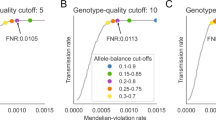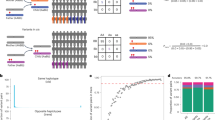Abstract
Extremely rare diseases are increasingly recognized due to wide-spread, inexpensive genomic sequencing. Understanding the incidence of rare disease is important for appreciating its health impact and allocating recourses for research. However, estimating incidence of rare disease is challenging because the individual contributory alleles are, themselves, extremely rare. We propose a new method to determine incidence of rare, severe, recessive disease in non-consanguineous populations that use known allele frequencies, estimate the combined allele frequency of observed alleles and estimate the number of causative alleles that are thus far unobserved in a disease cohort. Experiments on simulated and real data show that this approach is a feasible method to estimate the incidence of rare disease in European populations but due to several limitations in our ability to assess the full spectrum of pathogenic mutations serves as a useful tool to provide a lower threshold on disease incidence.
Similar content being viewed by others
References
Browning SR, Thompson EA (2012) Detecting rare variant associations by identity-by-descent mapping in case-control studies. Genetics 190:1521–1531. https://doi.org/10.1534/genetics.111.136937
Cannizzo S, Lorenzoni V, Palla I et al (2018) Rare diseases under different levels of economic analysis: current activities, challenges and perspectives. RMD Open. https://doi.org/10.1136/rmdopen-2018-000794
Cohen AC Jr (1960) Estimating the parameters of a modified poisson distribution. J Am Stat Assoc 55:139–143. https://doi.org/10.1080/01621459.1960.10482054
Grier J, Hirano M, Karaa A et al (2018) Diagnostic odyssey of patients with mitochondrial disease: results of a survey. Neurol Genet 4:e230. https://doi.org/10.1212/NXG.0000000000000230
Hardy GH (2003) Mendelian proportions in a mixed population. 1908. Yale J Biol Med 76:79–80
Karczewski KJ, Weisburd B, Thomas B et al (2017) The ExAC browser: displaying reference data information from over 60 000 exomes. Nucleic Acids Res 45:D840–D845. https://doi.org/10.1093/nar/gkw971
Kobayashi Y, Yang S, Nykamp K et al (2017) Pathogenic variant burden in the ExAC database: an empirical approach to evaluating population data for clinical variant interpretation. Genome Med. https://doi.org/10.1186/s13073-017-0403-7
Rode J (2005) Rare diseases: understanding this public health priority. EURORDIS, Paris, France. https://www.eurordis.org/IMG/pdf/princeps_document-EN.pdf
Schrodi SJ, DeBarber A, He M et al (2015) Prevalence estimation for monogenic autosomal recessive diseases using population-based genetic data. Hum Genet 134:659–669. https://doi.org/10.1007/s00439-015-1551-8
Updated Study Analyzes Use and Cost of Orphan Drugs (2018) In: NORD Natl Organ Rare Disord. https://rarediseases.org/updated-study-analyzes-use-and-cost-of-orphan-drugs/. Accessed 19 Nov 2019
Valdez R, Ouyang L, Bolen J (2016) Public health and rare diseases: oxymoron no more. Prev Chronic Dis. https://doi.org/10.5888/pcd13.150491
Weinberg W (1909) Über Vererbungsgesetze beim Menschen. Z Für Indukt Abstamm- Vererbungslehre 2:276–330. https://doi.org/10.1007/BF01975801
Acknowledgements
The author would like to thank Drs. Mario Cleves, Charlotte Hobbs, Michelle Clark, Svasti Haricharan, David Dimmock and Sara Raskin for commenting on the manuscript. They would also like to thank the TESS foundation, A 501(c)(3) nonprofit corporation, (https://tessresearch.org/) for providing cohort data. This work was funded in part by gifts from the Liguori Family, John Motter and Effie Simanikas, Ernest and Evelyn Rady, and Rady Children’s Hospital San Diego.
Author information
Authors and Affiliations
Corresponding author
Ethics declarations
Conflict of interest
MNB is a member of the TESS scientific advisory board.
Additional information
Publisher's Note
Springer Nature remains neutral with regard to jurisdictional claims in published maps and institutional affiliations.
Appendix
Appendix
Supplementary material
Source code for the simulation program, the precomputed maximum likelihood lambda estimator and an example MAF file is available from https://github.com/mnb922/RareDiseaseEstimator.
Rights and permissions
About this article
Cite this article
Bainbridge, M.N. Determining the incidence of rare diseases. Hum Genet 139, 569–574 (2020). https://doi.org/10.1007/s00439-020-02135-5
Received:
Accepted:
Published:
Issue Date:
DOI: https://doi.org/10.1007/s00439-020-02135-5




